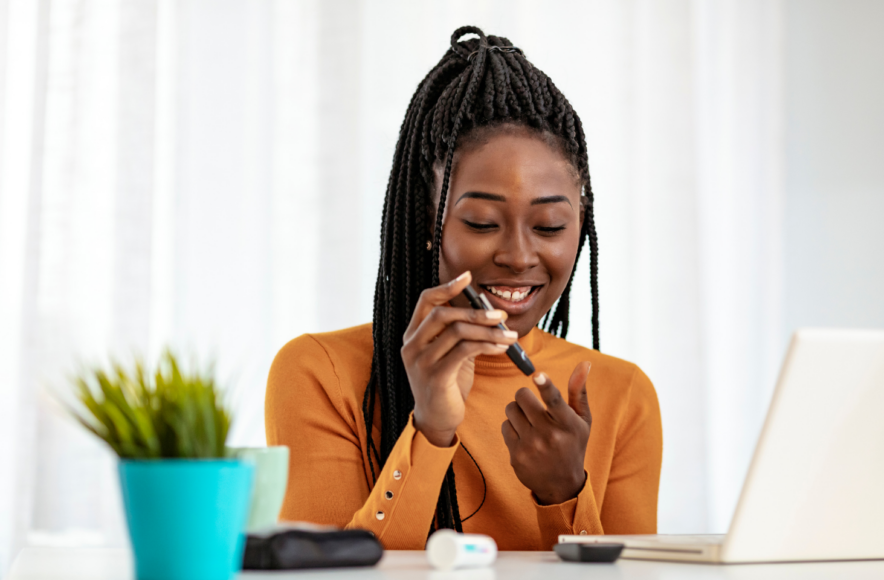Diabetes – what are the signs and how is it treated?

Type 1 and Type 2 diabetes
Type 1 diabetes is where your body’s immune system attacks and destroys the cells that produce insulin.
Type 2 diabetes is where your body doesn’t produce enough insulin, or the body’s cells do not react to insulin.
Type 2 diabetes is more common than type 1.
Signs and symptoms
There are a few signs and symptoms that might mean you have diabetes.
Speak to your GP as soon as possible if you experience the following symptoms:
- feeling very thirsty
- feeling very tired
- weight loss and loss of muscle
- weeing (passing urine) more often than usual, particularly at night
- itching around the penis or vagina, or frequent episodes of thrush
- cuts or wounds that heal slowly
- blurred vision
Treatment
If you are diagnosed with Type 1 diabetes, you will need to give yourself insulin to treat your diabetes. This can be taken via injection or by using a pump.
If you have Type 2 diabetes, you might have to use insulin or take medication, but some people can manage their diabetes through exercise and a healthy diet.
How do I test blood sugar?
It’s really important for diabetics to regularly check their blood sugar levels.
Kaja shows you how you can do this safely in this short video from Diabetes UK:
What is hypoglycaemia?
Hypoglycaemia is the medical term for low blood sugar (glucose) and is defined by a blood glucose level less than 4mmol/l.
Early signs of hypoglycaemia can include:
- sweating
- palpitations
- anxiety/agitation/aggression
- shaking
- hunger
- tearfulness
Later signs of hypoglycaemia include:
- confusion (or rapidly increased confusion in someone with dementia)
- drowsiness
- odd behavior
- speech difficulty
- lack of co-ordination
- coma
It’s important to remember that some people will only get symptoms at a lower level.
If you can’t test someone’s blood glucose to confirm a hypo, you should treat it as if it was one as it is more dangerous not to treat it.
How is hypoglycaemia treated?
Mild hypoglycaemia is when the person can self-treat the episode using something like:
- 100mls Lucozade™
- 150mls (small can) of non-diet fizzy drink
- 200mls (a small carton) smooth orange juice
- 5-6 dextrose tablets
- 4 large Jelly babies
- 7 large Jelly beans
- 2 tubes of glucose gel (this should be prescribed)
If none of these are available, you can add some sugar to water or have 2-3 teaspoons of jam.
If you can, you should retest their blood sugar level again 15-20 mins after one of these treatments. If the person does not feel better (or their blood sugar is still less than 4mmol/L), repeat one of the above.
Once they do feel better, they should eat a meal or a starchy snack like a sandwich or a piece of fruit.
Stay with them until they are fully recovered and they have had a meal or snack.
In cases of severe hypoglycaemia:
If the person is unconscious and/or unable to swallow safely:
- Put the person in the recovery position (on their side with their head tilted back)
- Nothing should be put in their mouth
- Call 999 for an ambulance and stay with the person until the paramedics take over care
Who is more at risk of diabetes?
There are certain factors that increase your risk of developing type 2 diabetes.
These include:
- Family history of diabetes – you’re two to six times more likely to get type 2 diabetes if you have a parent, brother, sister or child with diabetes.
- Age – You’re more at risk if you’re white and over 40, or over 25 if you’re African-Caribbean, Black African, or South Asian.
- Being overweight, or having a waist 31.5 – 35 inches or over for women; 35 inches or over for Asian men and 37 inches or over for white and black men
- Having high blood pressure or history of a heart attack or a stroke
- Having gestational diabetes
There are also certain groups of people that are more prone to developing the condition.
These include:
- Women with polycystic ovary syndrome who are overweight
- People with impaired glucose tolerance or impaired fasting glycaemia
- People with a learning disability
- People with serious mental illnesses
Diabetes UK have created a tool to help people find out their risk of Type 2 diabetes – you can try it here:
- Alison Worsfold is Head of Healthcare at United Response.
Want a rewarding career?We’re recruiting across the country now. From support workers to area managers, take a look at the opportunities available in your area. Search United Response jobs